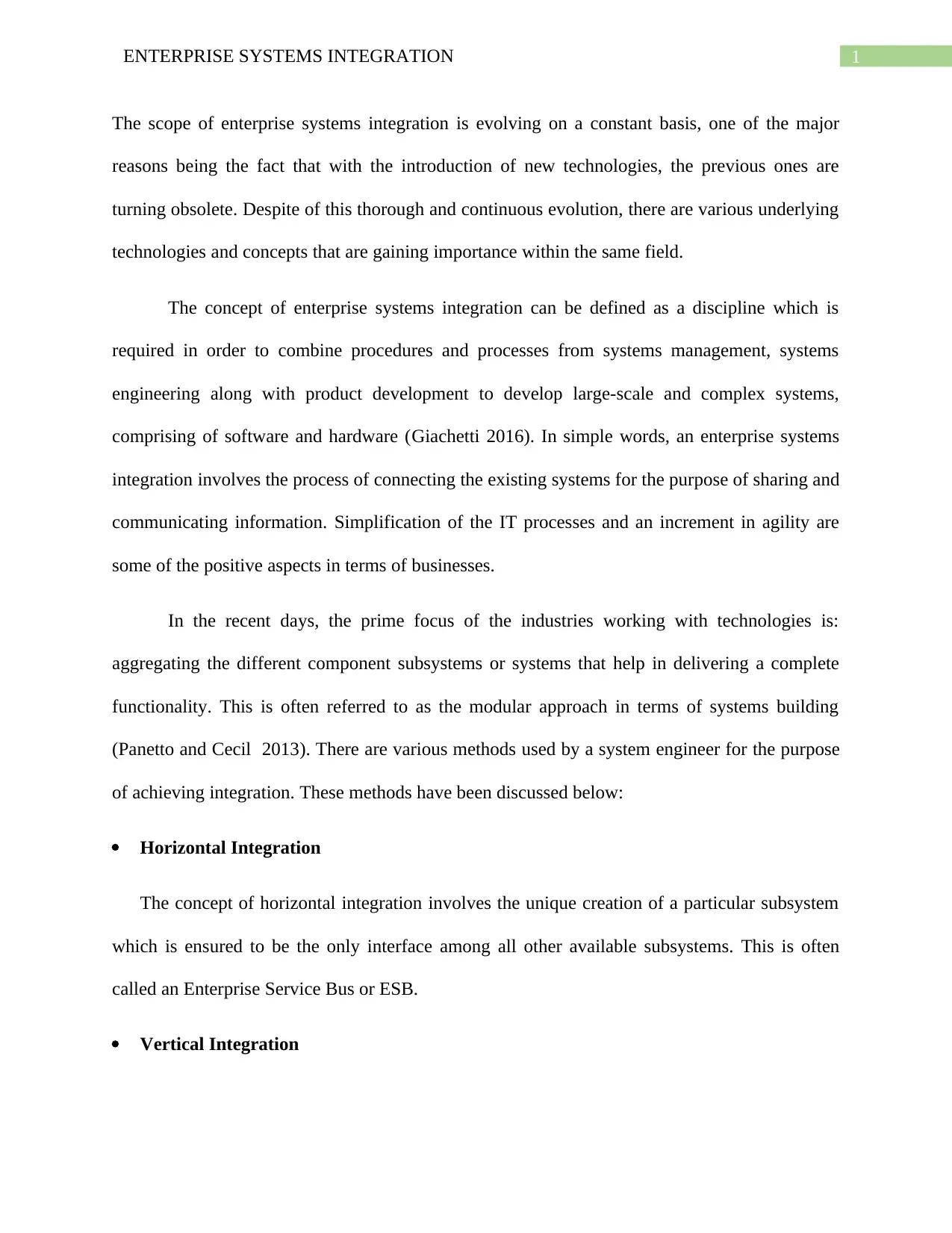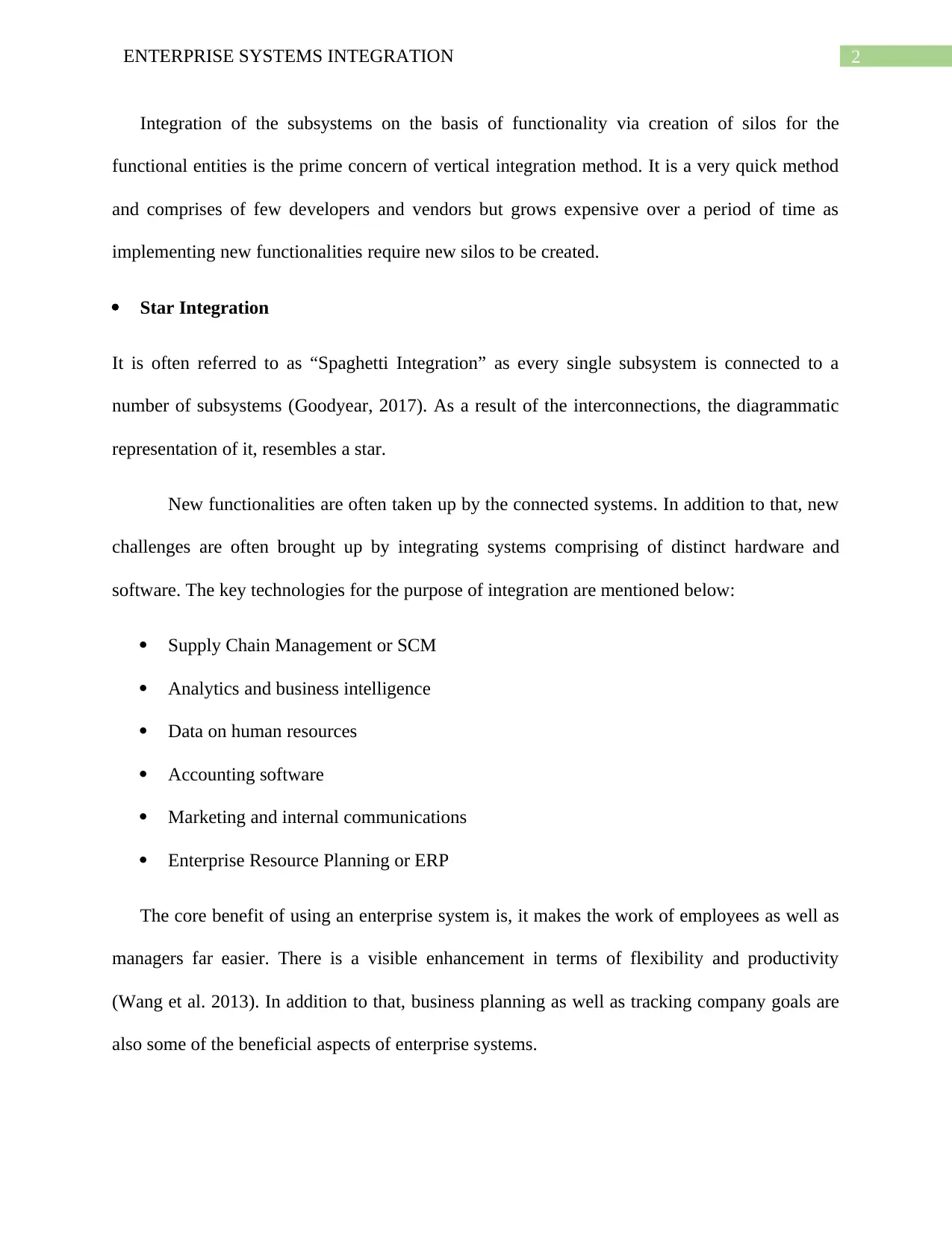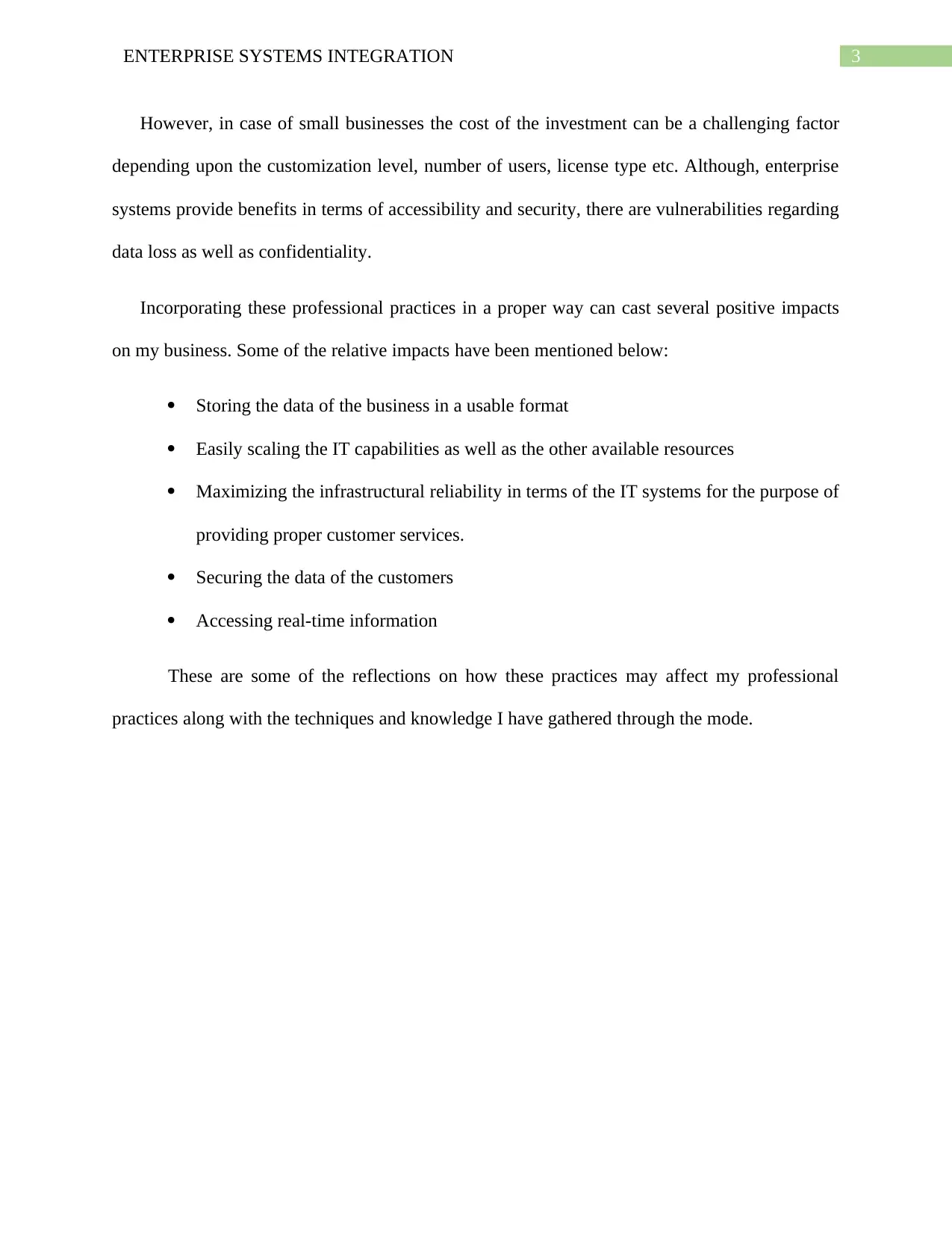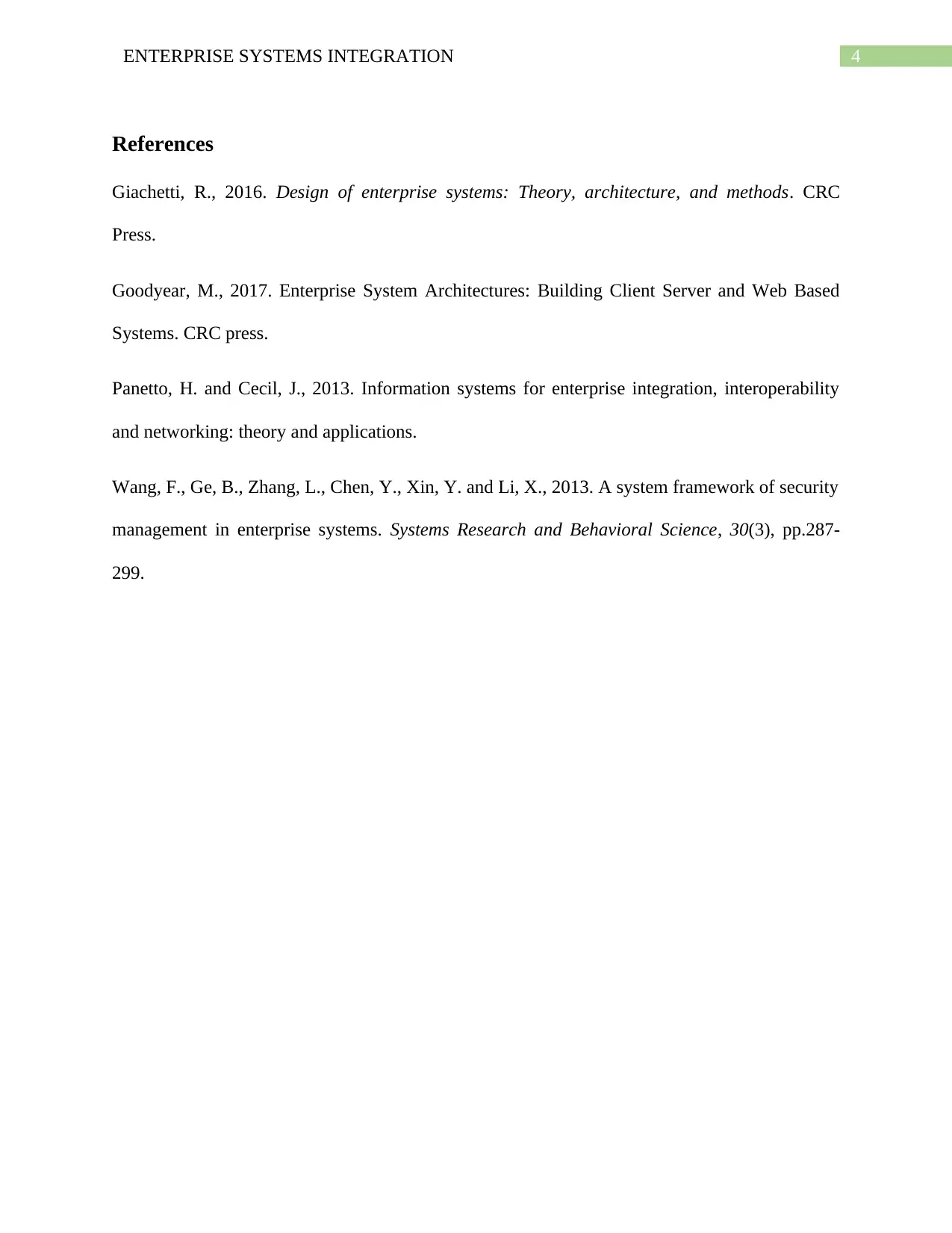Enterprise Systems Integration Report: Key Technologies and Methods
VerifiedAdded on 2022/10/11
|5
|819
|9
Report
AI Summary
This report delves into the concept of enterprise systems integration, defining it as the combination of procedures and processes from systems management, engineering, and product development to create large-scale systems. It explores various integration methods, including horizontal, vertical, and star integration, highlighting their characteristics and applications. The report identifies key technologies such as Supply Chain Management, Analytics, ERP, and others crucial for integration. It discusses the benefits of enterprise systems, such as enhanced employee efficiency, improved business planning, and increased flexibility, while also acknowledging challenges like cost and data security. The report concludes by reflecting on how these practices can positively impact professional practice, emphasizing data storage, IT scalability, infrastructural reliability, customer data security, and access to real-time information, drawing on knowledge and techniques acquired through the module.
1 out of 5












![[object Object]](/_next/static/media/star-bottom.7253800d.svg)